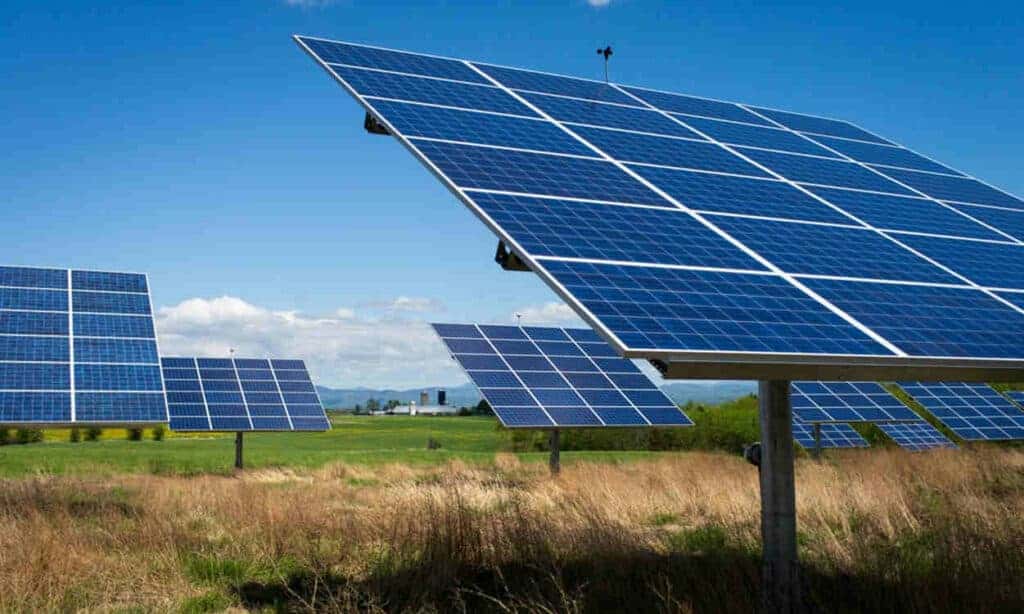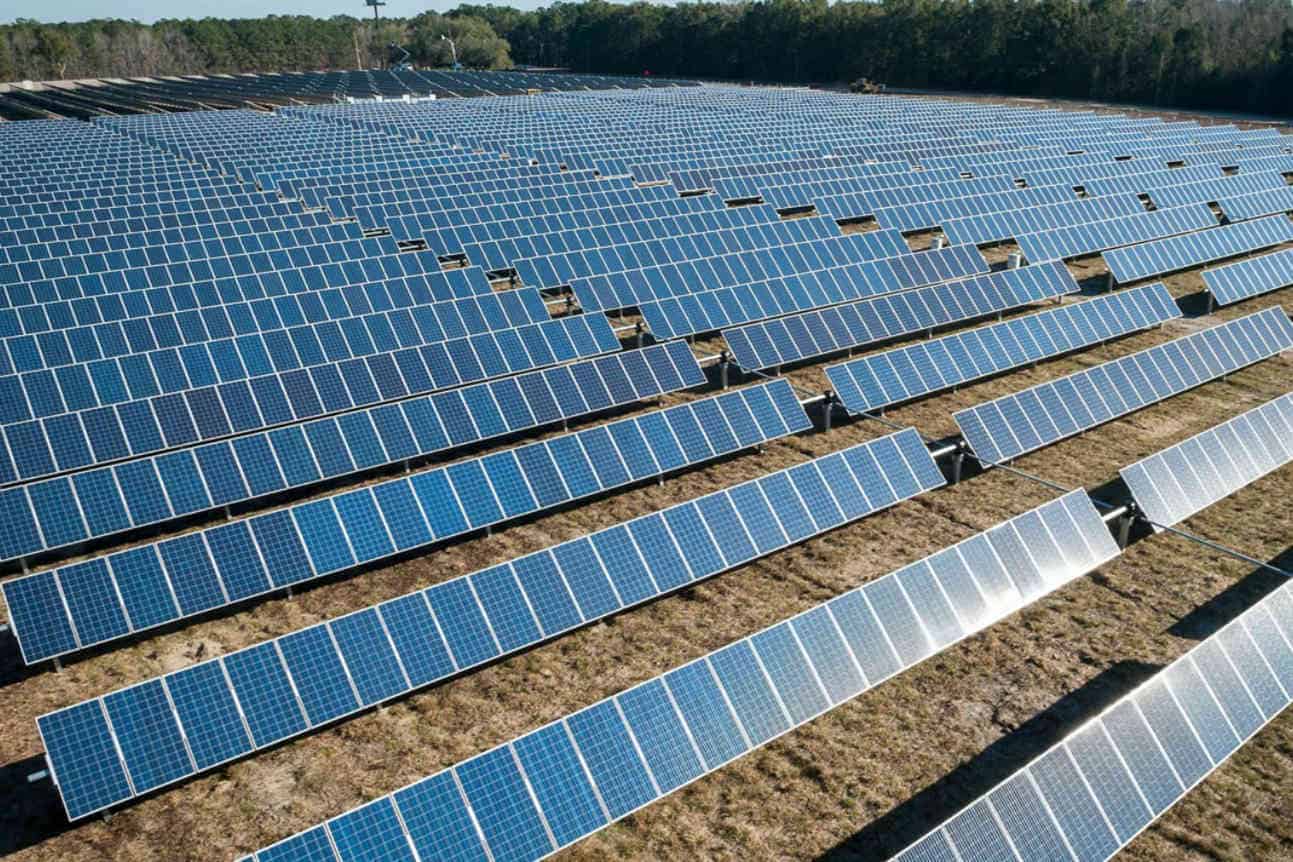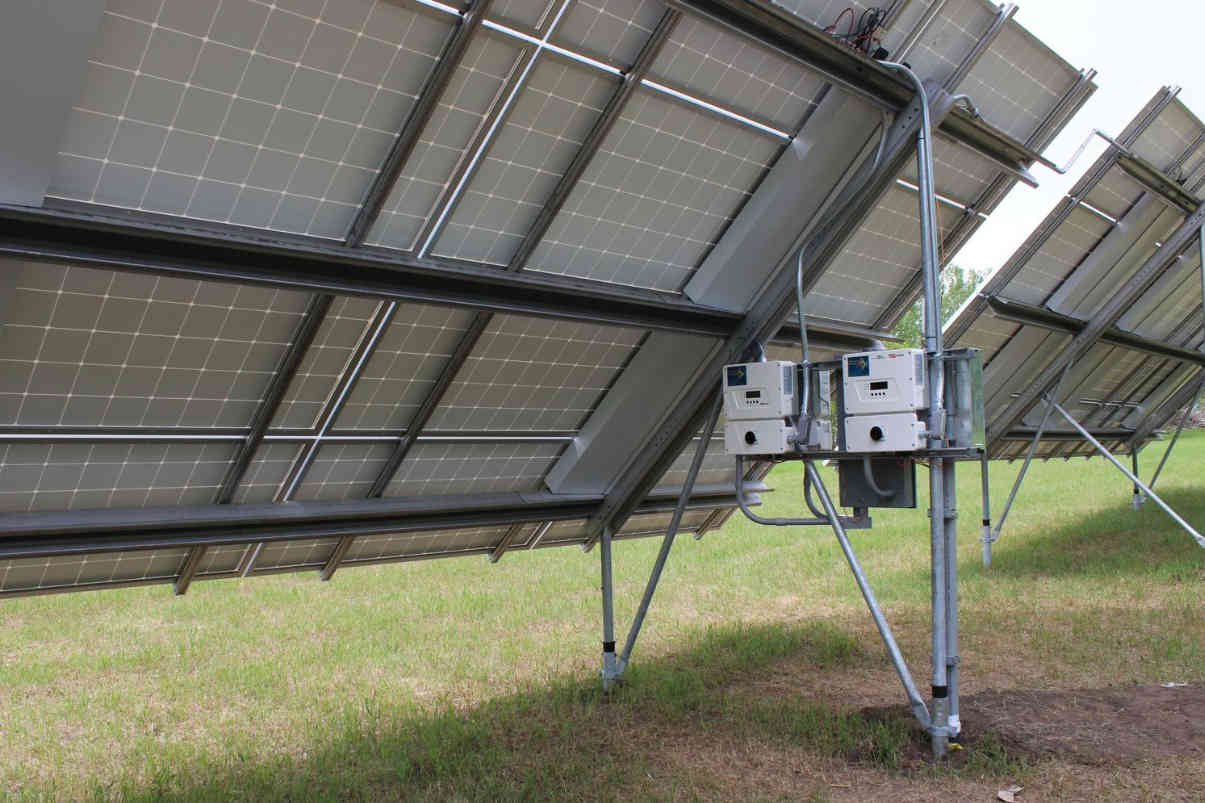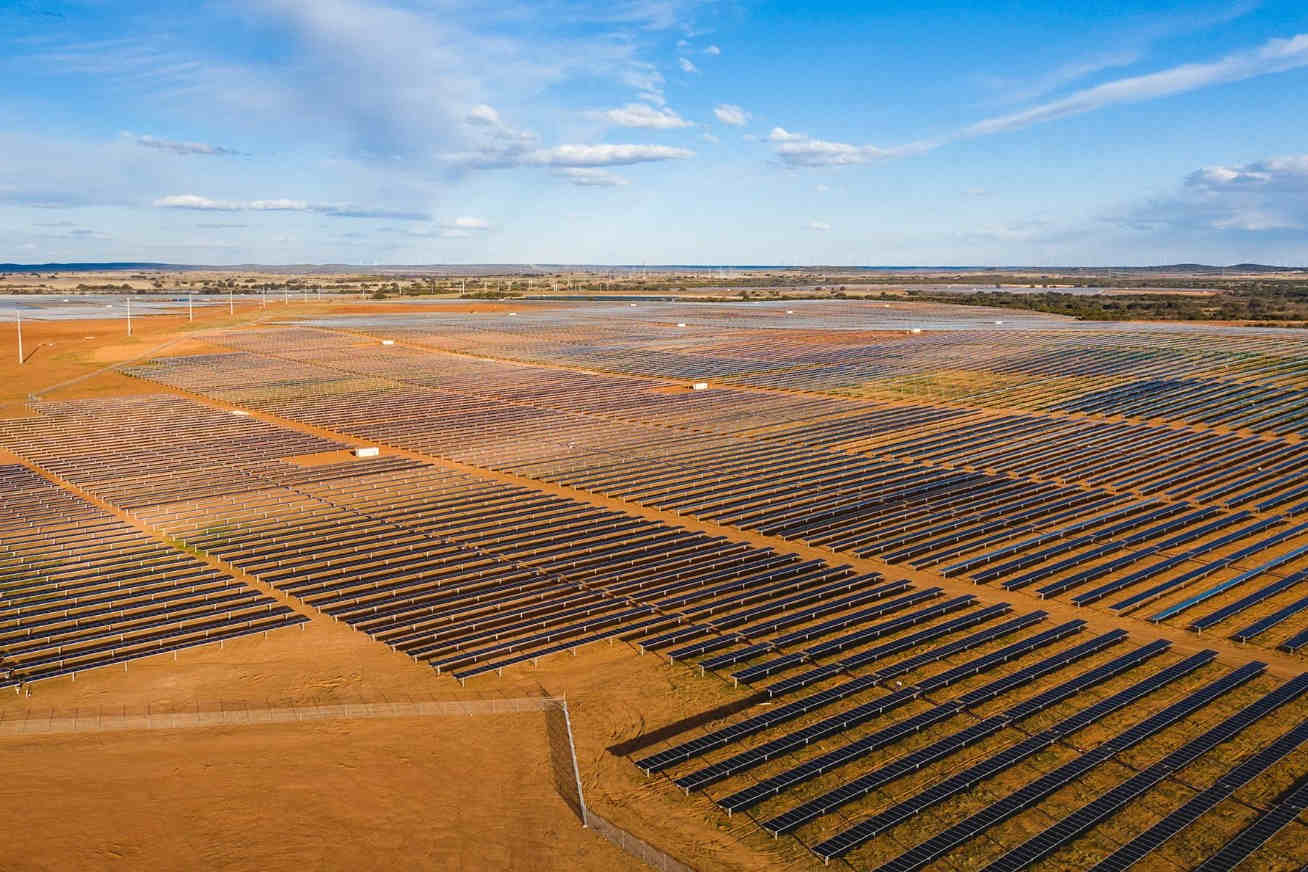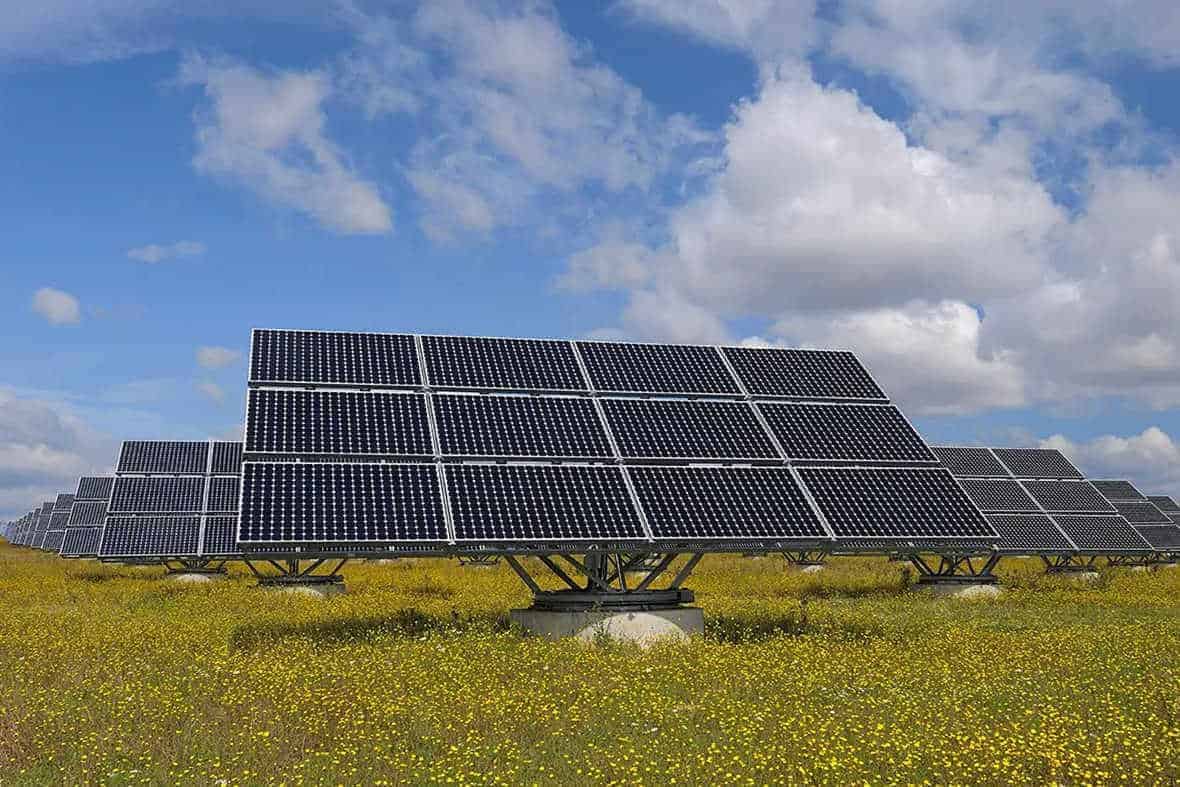They say that the sun, in a single hour, showers the blue marble we call home with enough light energy to power the entire planet for a whole year. But to capture this immense energy, we may have to cover the entire globe with a blanket of solar panels.
While covering the entire planet with solar panels is a dream I’d like to come true, it is not feasible, let alone practical. But one solar solution could bring us an inch closer to this dream; solar farms.
But what is a solar farm? Is it a place where baby solar panels grow?
Join us as we debunk the mystery that is solar farms. We will discuss how they work, the common types of solar farms, and the associated advantages and disadvantages.
But first things first.
What is a Solar Farm?
A solar farm goes by so many names, including solar power plant, photovoltaic (PV) plant, and PV farm. Despite its many faces and numerous aliases, one thing remains constant; its meaning.
A solar farm refers to large-scale solar panel installations, encompassing not merely a few, but hundreds or even thousands of photovoltaic (PV) panels. With the large size comes an equally enormous power output, usually hundreds or thousands of megawatts (MW).
Just for scale, the largest solar farm in the world is Golmud Solar Park in China. This solar farm brings a whole new meaning to the word gargantuan, pumping out an amazing 2,800 MW or 2.8 GW (Gigawatts).
If you’re impressed by the 3kW that your domestic solar panel system generates, solar farms will blow your mind. So buckle up, dear reader, as we get into the meat of our subject; solar farms.
Components of a Solar Farm
A functional solar farm is a set of different components, all working together in harmony. The key components that make up a solar farm include:
1. Solar Panels
Solar panels or PV panels are the main components of the solar farm. They are the primary power plants. A solar panel uses the sun’s rays to generate electricity. But this electricity is not ready for consumption because it is in direct current (DC).
We need to convert this raw electricity to a consumable format. And for that, we need inverters.
2. Inverters
Consumer electronics (TV sets, computers, refrigerators, etc.) use alternating current (AC) power. Inverters help convert raw DC power from our PV panels to consumable AC power.
3. Mounting Structures
We can’t just lay our solar panels on the ground and expect top-shelf electricity. We need to angle them to maximize power output. For that, we need mounting structures.
4. Transformers
Solar farms generate tons of electricity, and we may want to transport that power over long distances. Long-distance transmission needs high-voltage power. And for that, we need transformers. No, not Optimus Prime and his band of brothers but rather devices that step up the power before it leaves the solar farm and step it down at its destination.
5. Transmission Lines
Speaking of transporting power, you’ll need high-voltage transmission lines to facilitate this movement. Transmission lines are the electricity’s interstate highway system.
6. Monitoring and Control Systems
A solar farm is your residential solar panel system on steroids. As such, you must have sophisticated monitoring and control systems to track the performance of individual solar panels, inverters, and other components. And by extension, you can optimize their performance and schedule for maintenance.
7. Substation
Substations naturally complement solar farms. These are off-site units that house transformers and switchgear.
8. Land and Infrastructure
This includes the land that the solar farm and its satellite substations sit on, the access roads leading to these sites, fencing, and other security measures.
9. Energy Storage (Optional)
Some solar farms may elect to incorporate energy storage systems on their solar farms. At its most basic, an energy storage system is a series of batteries that store the electricity generated during the day for nighttime consumption. Think of it as a power bank.
How Solar Farms Work
Okay, we all know that the sun’s energy manifests as light (sunshine) and heat. But we can also convert the sun’s energy to generate electricity, and lots of it. One technology that helps us achieve this goal is solar photovoltaics (or PV).
You have probably seen PV panels on top of roofs. Maybe you own a couple yourself. Recent technological advances have greatly improved their efficiency and power output.
Remember when we said the sun dissipates enough energy in a single hour to power the entire planet for a whole year?
Here’s how it works:
A single ray of sunlight comprises tiny packets of energy known as photons. These photons that radiate from the sun travel millions of miles to strike the semiconductors on our PV panels. It all happens, literally, at the speed of light.
You see, a solar PV panel is made up of several individual cells, each with a positive and a negative layer. As the photons hit the solar cells, they free up some electrons in the semiconductor material.
These electrons create an electric current which is harnessed by wires connected to the positive and negative sides of each solar cell.
The electricity generated is multiplied by the number of solar cells in each panel and the number of panels in each solar array. Combined, a single solar array can make enough electricity to power an entire home. The solar array on a single solar farm can generate enough juice to power a small town.
Types of Solar Farms
There are six common types of solar farms. They include:
1. Utility-Scale Solar Farms
This is a very large solar farm, typically located in open sunny areas like deserts or rural locations. Utility-scale solar farms cover a vast area and generate megawatts of power, often feeding this electricity to the power grid.
The below video shows what it’s like to run a 260MW Utility-Scale Solar Farm:
2. Community Solar Farms
Community solar farms are owned by members of a particular community. What usually happens is members of that community buy or lease shares of the solar farm. In exchange, they earn credits on their electricity bills for the energy generated, usually in proportion to their shares. Sounds confusing?
Here’s Kelly from Going Solar With Pivot Energy with an explanation:
3. Floating Solar Farms
A floating solar farm is just that, a solar farm that floats on a huge water body. Usually, installers will mount solar panels on floating platforms on lakes, ponds, oceans, seas, and reservoirs. Since 70% of the earth’s surface is covered by water, floating solar farms put our water bodies to good use.
4. Distributed Solar Farms
Solar farms usually require large tracks of land. To our point again, land can be limited and therefore expensive. One solution would be to break down a solar farm and move it closer to the consumer.
For example, you can mount solar panels on the roof of each consumer. In this way, you are saving on land, infrastructure, and the need for transformers.
5. Concentrated Solar Power (CSP) Farm
Through PV technology, we can turn the sun’s light into electricity. But how can we convert the sun’s heat into power? For that, we need a Concentrated Solar Power (CSP) farm.
A CSP farm uses mirrors and lenses to concentrate sunlight to a central receiver. The receiver turns the solar energy into heat, which is used to generate steam—the steam drives turbines which generate electricity.
Clever engineering; different approach, same outcome.
6. Agrivoltaic Systems
Now take agriculture (farming crops and animals) and combine it with photovoltaic technology (using the sun’s rays to generate power), and you get an agrivoltaic system. Basically, agrivoltaic systems incorporate agricultural activities with solar power generation.
You can grow plants under the shade of solar panels. It saves water for irrigation, and you can earn SRECs by injecting the power you make into the grid.
Here’s a video to explain how agrivoltaic systems work.
Advantages of Solar Farms
There are many obvious advantages to solar farms. Below is just a highlight of a few:
- Solar farms produce cheap, renewable, and clean energy
- They are scalable; you can make them as big or as small as you want
- Solar farms create jobs for solar installers, electricians, and solar cleaners
- They are a source of livelihood for their investors and manufacturers of solar equipment
- Solar farms can live for up to 30 years when maintained properly
- Solar farms supplement the grid, reducing dependence on diesel generators
- They can be installed on any terrain, climate, or altitude
- Solar farms are a powerful educational tool for schools and communities
Challenges and Limitations of Solar Farms
As you know, with the good also comes the bad and the ugly. What challenges can we expect from solar panels?
Below are common limitations associated with solar panels:
- Daylight hours can shorten with the seasons and weather conditions
- Utility-scale solar farms require large tracks of land, which is expensive to acquire
- Solar farms are also expensive to set up in terms of initial investment
- Solar panels have limited efficiency
- Manufacturing of solar panels negatively impacts the environment
- Solar farms demand intense maintenance regimes
Final Thoughts
And that, friends, is everything you need to know about solar farms. But just to recap, Solar farms are solar panel systems on steroids. They require large tracts of land, substantial financial investment, hundreds if not thousands of solar panels, and a sophisticated infrastructure system to establish.
But for your troubles, you get hundreds if not thousands of megawatts, a lucrative business, and a clean conscience. With this power output, you can light up a small town and lead the march towards green renewable energy. What’s not to like?

